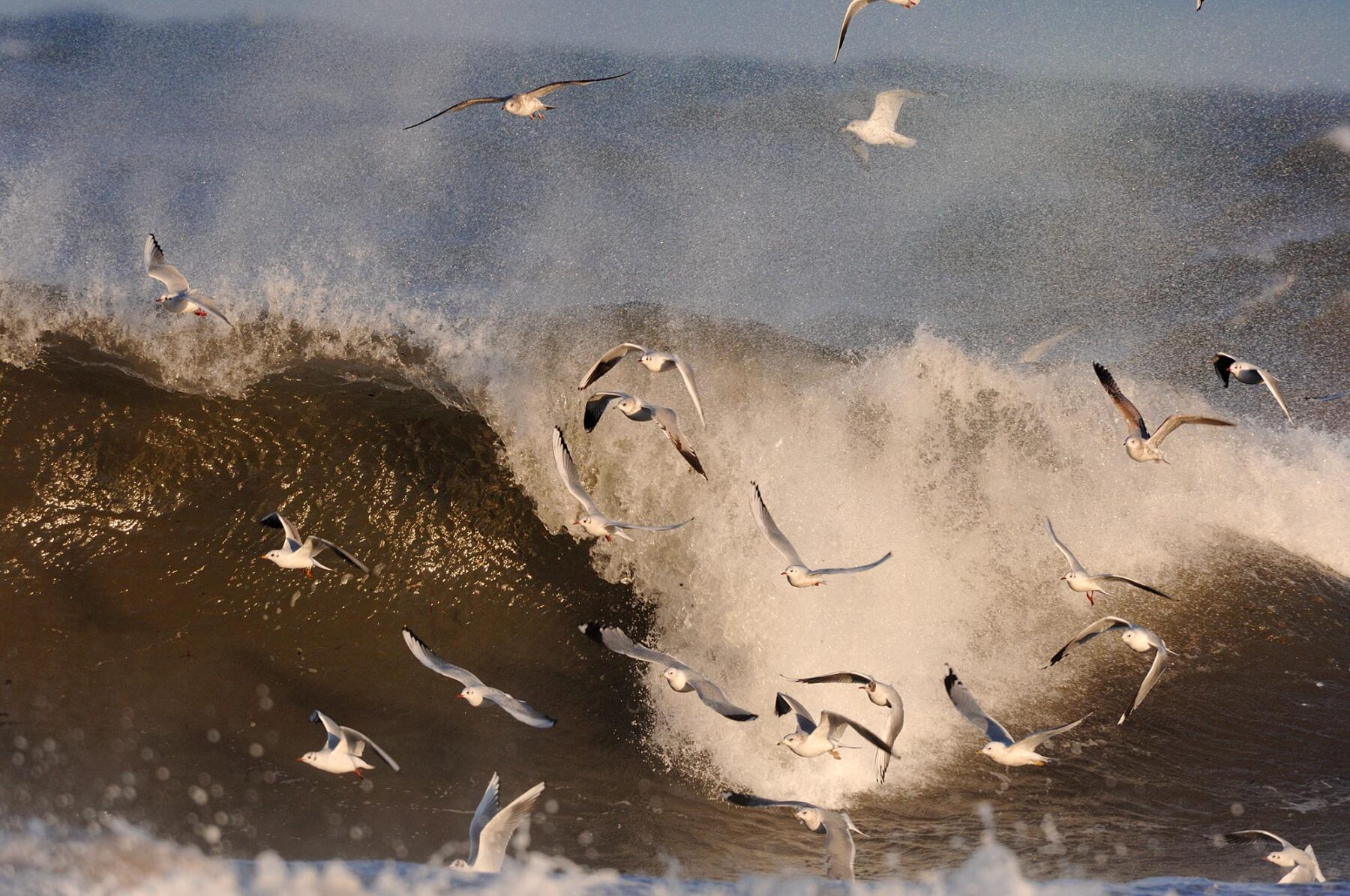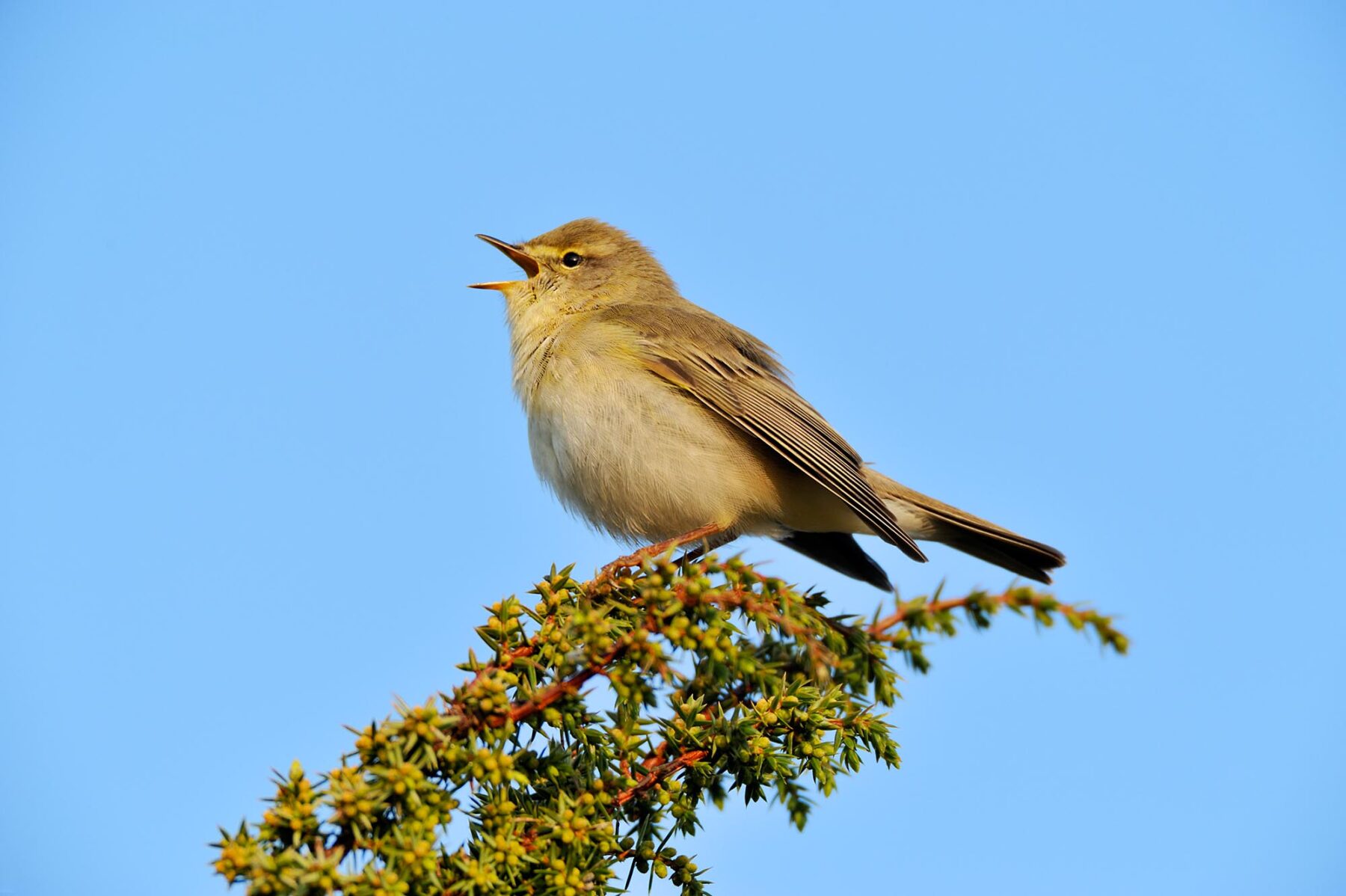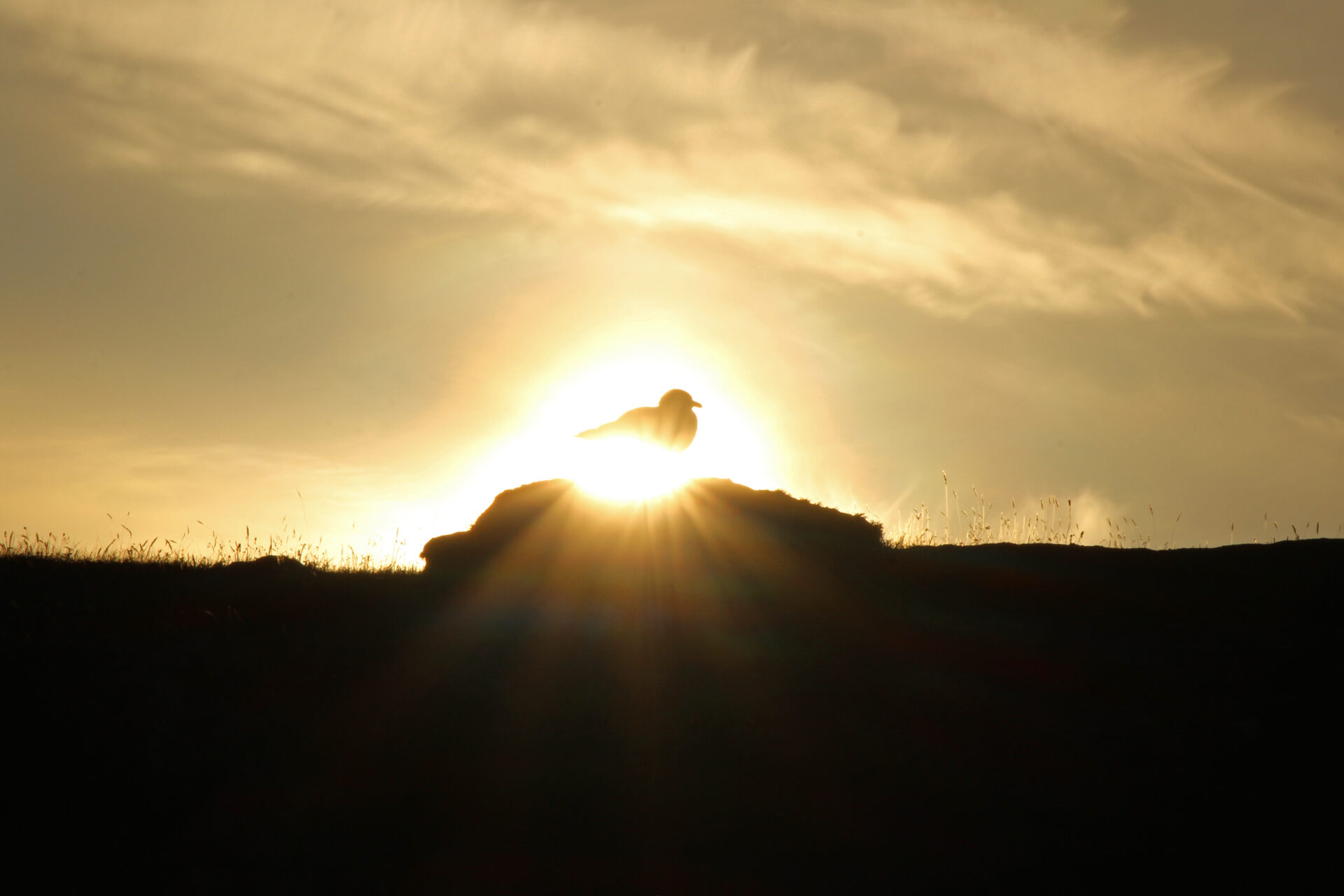Although the summer solstice represents all the abundance and potential of summer, it is also a moment of stillness. The pause in the pendulum swing of the year as day length reaches its maximum and the night is just a fleeting shadow where twilight kisses the dawn. The northern hemisphere is at its maximum tilt towards the life-giving energy of the sun; the great in-breath of spring is poised to gust outwards into the hazy buzz of summer. While there are many magical things one could reflect on at such a moment, this year I am sitting with a thought I always enjoy pondering and often return to. It is that of the dawn and dusk chorus.
Dawn comes as the Earth rotates into the sun’s light, and dusk as the spin continues into shadow. When we consider this on a planetary scale, we can imagine this line of light-meets-shadow as an ever-moving wave across the Earth. But I like to muse that this wave is not just one of light moving to dark, or dark back to light, but that it carries another wave with it. A wave of sound. Specifically, a wave of birdsong.
It is easy to engage with our sensed experience of the world as an isolated or localised set of events, and to forget how events connect beyond our horizons. When it comes to the daily chorus of birds, I often find myself appreciating it simply as a rise and fall of song that follows the sun’s path across the sky. Yet this, of course, isn’t quite the case. There is no fixed endpoint to dawn or dusk — it simply moves elsewhere, carrying with it the swelling proclamations of myriad birds, each locale offering its own unique orchestral suite. Like the edges of a spinning coin, birdsong floods across the landscape at the crest of a wave that never breaks. Charging the liminal space between day and night with a melodic furore. Changing in frequency with the meandering tilt of the Earth and the changing seasons, but never sitting still. The baton of avian arias continually passes to the west; the birds are always singing somewhere.

At the summer solstice, the nights are at their shortest. For three days and nights, sunrise and sunset sit just 6 hours apart (here at Aigas at least). So, the fevered attempts of birds of all shapes and sizes to announce their territory, their feeding grounds, their joy*, are squeezed together, nearly blurring at the edges. When I’m off to sleep, the chorus swells; when I wake, it is already well underway, as if without pause.
Evidence shows that birds have produced something resembling birdsong for at least 66 million years. So, at some unknown point between now and 66 million years ago, when birds had colonised all corners of the earth, this sonic tidal wave began in earnest and has moved ceaselessly with the seasons since, and long may it continue. (long may it continue). There is much to be said about how this wave has quietened due to our human activities, but the solstice, among many things, is a time for celebration.

And so, in this brief lull at the peak of the year, when the light holds steady and birdsong blurs from dusk to dawn, we can listen a little differently. Not just to the birds we hear in our own patch of sky, but also to the echo of a song that has circled the Earth for millennia. A song that reminds us — amid all the change and chaos — that some rhythms endure. That we are embedded in a web of connections that extend far, far beyond our horizons. That life, in an untold array of melodies, sings on.
*Research still hasn’t proven otherwise, so why not?
by Aigas Ranger, Alex Levontine


